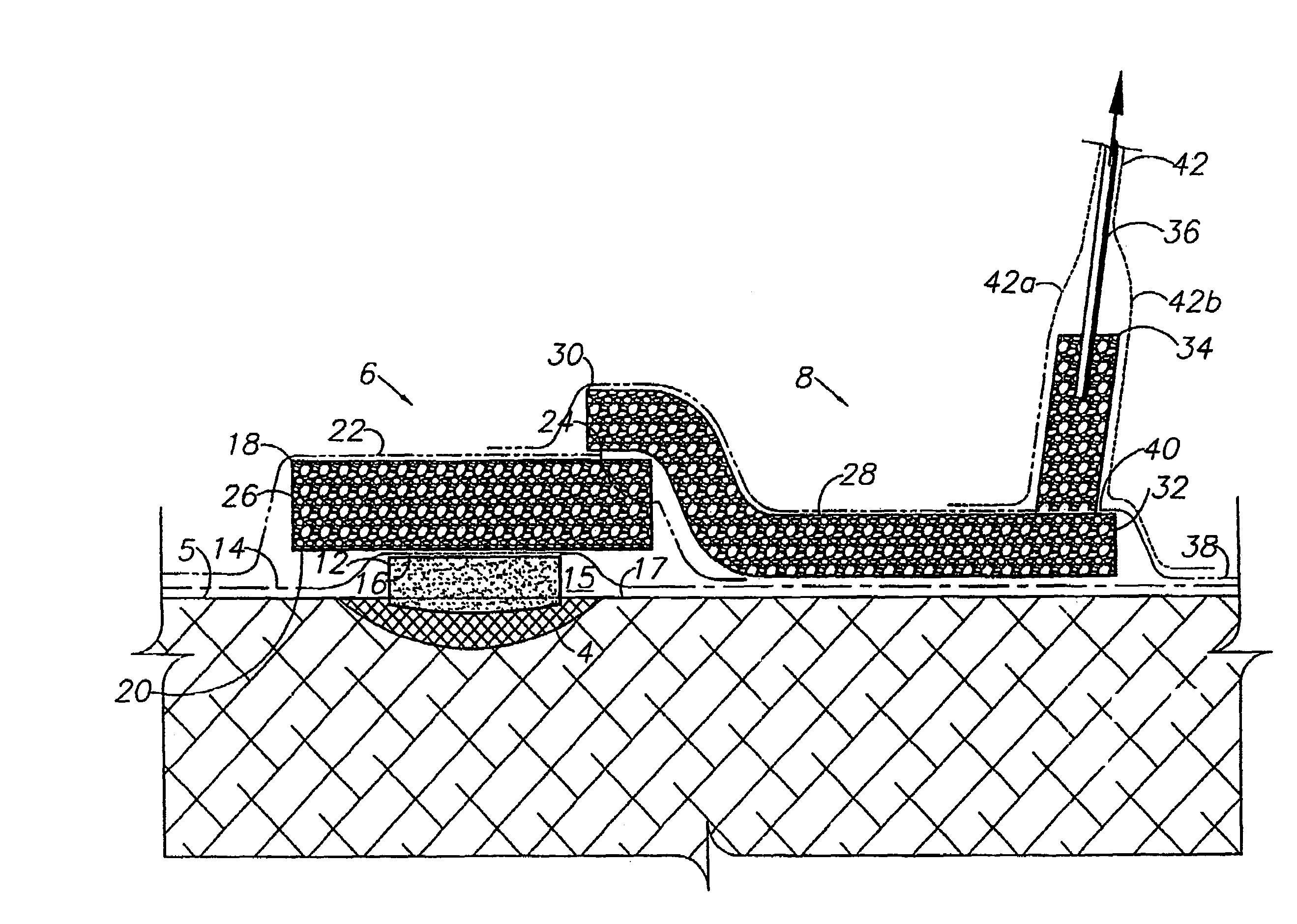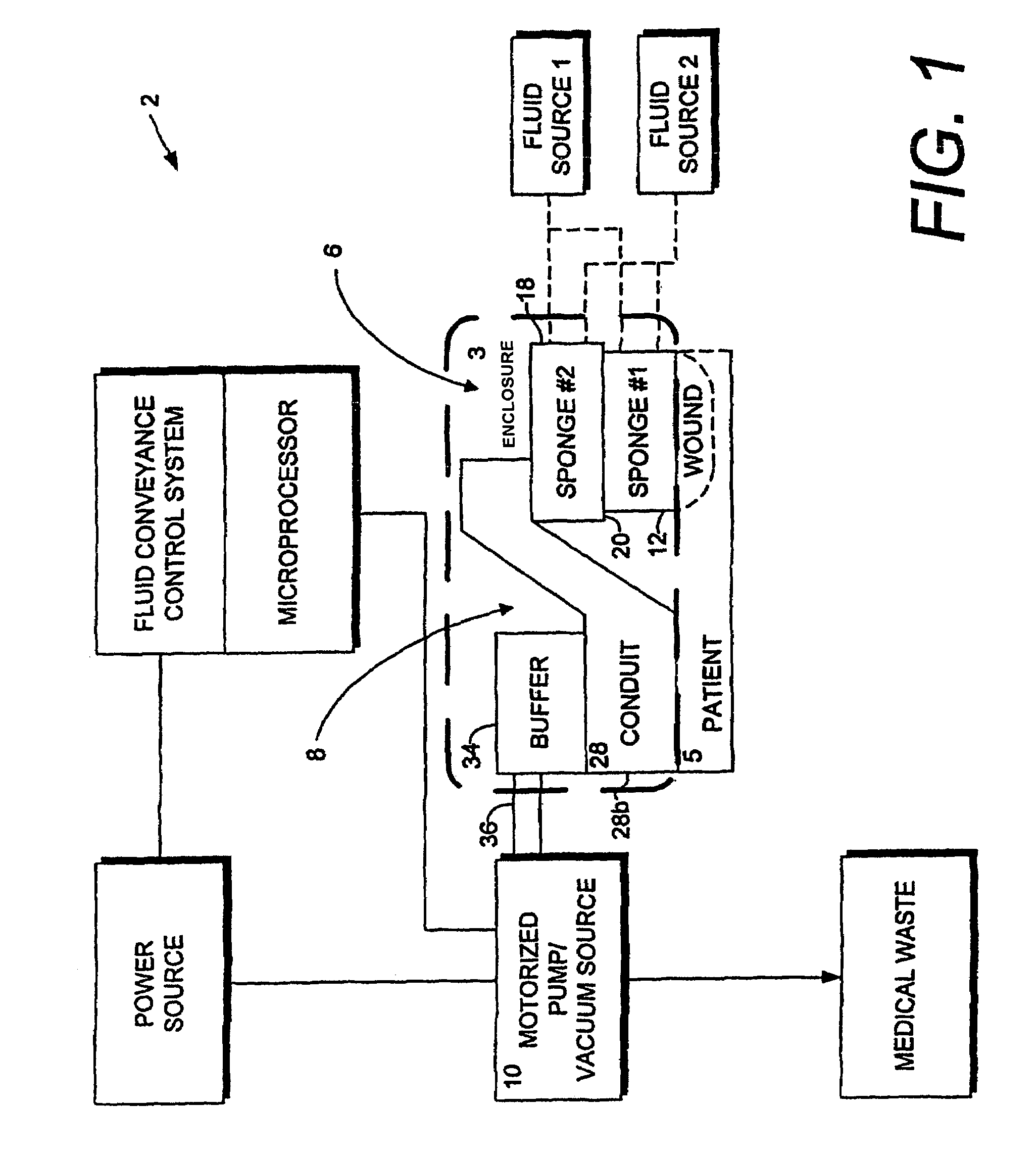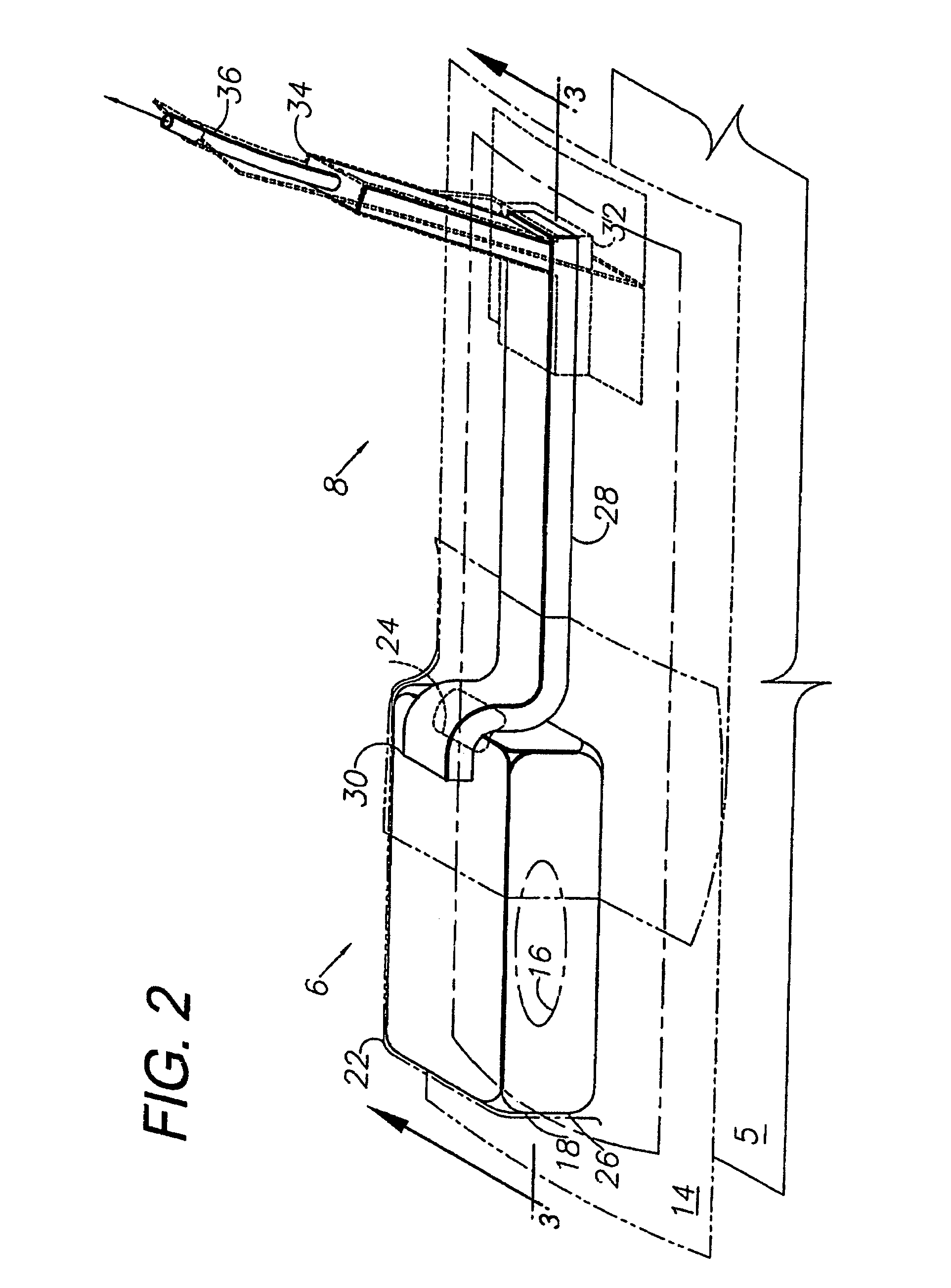Wound therapy and tissue management system and method with fluid differentiation
a tissue management system and wound technology, applied in the field of medical care, can solve the problems of tissue breakdown and necrosis, bacterial overgrowth, and ineffective current tissue management and fluid drainage procedures,
- Summary
- Abstract
- Description
- Claims
- Application Information
AI Technical Summary
Problems solved by technology
Method used
Image
Examples
first modified embodiment
III. First Modified Embodiment Fluid Differentiating Wound Dressing 53
[0048]A wound dressing 53 comprising a first modified embodiment of the present invention is shown in FIG. 4 and includes a liner 54 between the wound 4 and a first sponge 56, which can comprise a hydrophilic or hydrophobic material. The liner 54 passes fluid, but partially isolates and shields the wound tissue from the first sponge 56 to prevent the formation of spicules penetrating the open-passage first sponge 56. The liner 54 thus permits the first sponge 56 to comprise hydrophobic (e.g., PUE) material, even when spicule penetration is not desired.
second modified embodiment
IV. Second Modified Embodiment Fluid Differentiating Wound Dressing 102
[0049]A wound dressing comprising a second modified embodiment of the present invention is shown in FIG. 5 and generally comprises a collector assembly 106 and a transfer assembly 108. The collector assembly 106 can be similar to the collector assembly 6 with a suitable composite construction. The transfer assembly 108 comprises an elbow connector 110 placed on top of a second sponge drape 112 covering the second sponge 114. The elbow connector 110 mounts the distal end 116 of a suction tube 118, which is also connected to a vacuum source 10. A first sponge drape 120 is placed over a first, hydrophilic sponge 122 and includes a central opening 123 communicating with the second sponge 114.
[0050]FIG. 5a shows an interface device 102a comprising a variation of the construction of the wound dressing 102. The device 102a utilizes a flexible, bellows-type tubing section 110a in place of the elbow connector 110 describe...
third modified embodiment
V. Third Modified Embodiment Fluid Differentiating Wound Dressing 202
[0051]A fluid differentiating wound dressing 202 comprising a third modified embodiment of the present invention is shown in FIGS. 6–8 and generally comprises a transfer assembly 204 (FIG. 6) adapted for mounting on a collector assembly 206 as shown in FIG. 7.
[0052]The transfer assembly 204 comprises a sponge material buffer 208 which can comprise, for example, polyurethane ether (PUE). The buffer 208 is encased in first and second drape panels 210, 212 with wings 210a, 212a respectively extending in opposite directions from the buffer 208. The wings 210a, 212a have an adhesive layer 214, which is covered by a removable backing sheet 216 prior to installation. Tab strips 218 are provided at the ends of the drape wings 210a, 212a. The tab strips 218 are attached by perforated lines 220 for easy removal upon installation. The suction tube 36 is embedded in the buffer 8 and extends outwardly from the transfer assembly...
PUM
 Login to View More
Login to View More Abstract
Description
Claims
Application Information
 Login to View More
Login to View More - R&D
- Intellectual Property
- Life Sciences
- Materials
- Tech Scout
- Unparalleled Data Quality
- Higher Quality Content
- 60% Fewer Hallucinations
Browse by: Latest US Patents, China's latest patents, Technical Efficacy Thesaurus, Application Domain, Technology Topic, Popular Technical Reports.
© 2025 PatSnap. All rights reserved.Legal|Privacy policy|Modern Slavery Act Transparency Statement|Sitemap|About US| Contact US: help@patsnap.com



